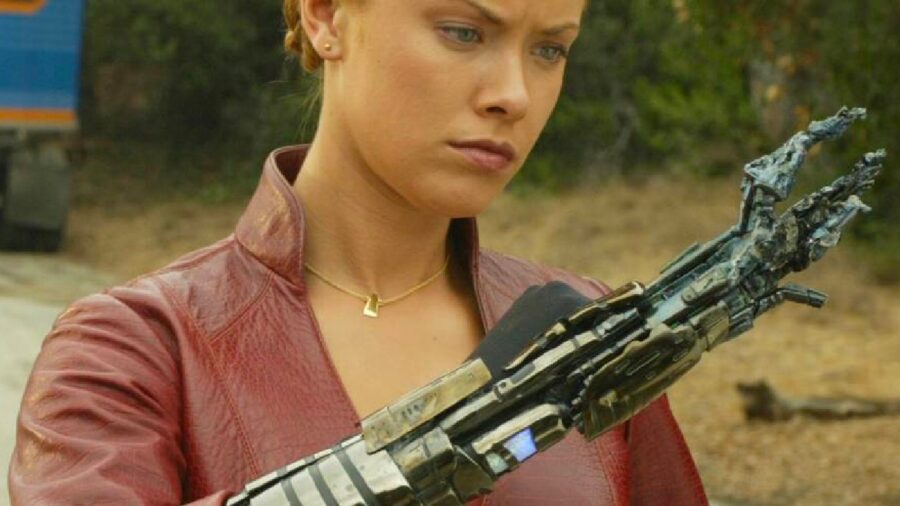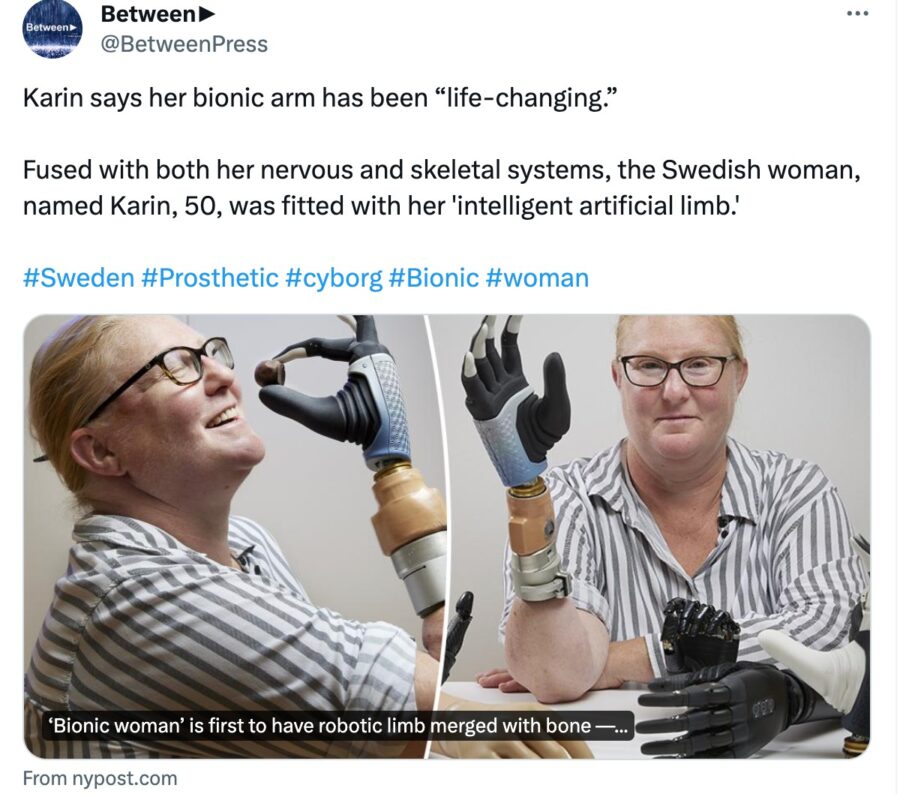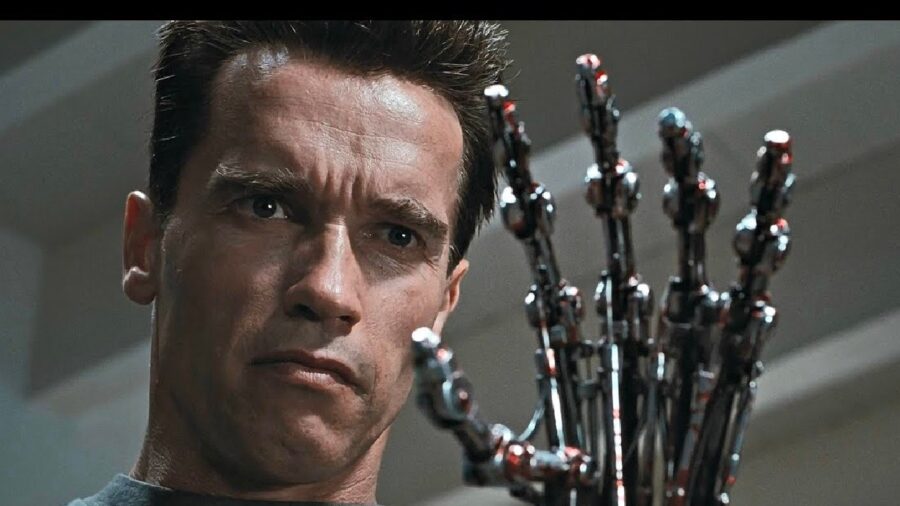Bionic Woman Makes History Merging Robotic Limb With Bone And Her Mind

Today’s surprising news comes from Science Robotics, detailing the incredible medical breakthrough that could improve the lives of amputees significantly and focuses on the real-life bionic woman. This new type of artificial limb, a neuromusculoskeletal implant, is a major leap forward in the field, and its success is a promising first step. While the technology may take time to proliferate and become affordable, it’s a great start.
Meet Karin

This so called bionic woman is named Karin, is 50 years old, and had her right arm amputated after a farming accident over two decades ago. She struggled with conventional prosthetic arms and chronic phantom pain throughout her 20 years of living as an amputee. This new advanced prosthetic has significantly improved her quality of life.
Closer Than Ever To The Real Thing

Unlike traditional prosthetics, the direct attachment to her skeletal and nervous system means this bionic woman can move the hand and fingers of her prosthetic directly with her mind. While this dexterity isn’t on par with a biological hand it’s shockingly close, with researchers claiming she has 80% functionality as compared to a natural hand. While still short of full restoration that’s an incredible amount of functionality compared to traditional prosthetics.
The Arm Can Feel

Perhaps even more impressive, this new type of prosthetic has restored some of Karin’s sense of feeling in the arm. Because the prosthetic is directly attached to her nervous system it is able to send signals to her brain in a similar way that a biological arm would. While this sense is much less sensitive and sophisticated than that of a natural limb, any restoration of feeling is a huge leap forward and the improvement that most makes Karin the real-life bionic woman.
In addition to earning her the bionic woman nickname, the prosthetic has improved Karin’s quality of life significantly in numerous ways. Obviously, the restored functionality is a huge, pragmatic improvement giving her more independence and allowing her to do things that she couldn’t previously do on her own. Just as importantly, the restored sense of feeling has greatly reduced her phantom pains, allowing her to decrease the amount of pain medication she needs in a given day.
The 1976 Bionic Woman

It’s often said that science follows science fiction, and this fascinating new technology is certainly one such case making the science fiction idea of cybernetics very real. Karin’s case being compared to the iconic Bionic Woman series illustrates this connection between fiction and reality perfectly. Of course, it’s far from the only example of popular science fiction having a direct relationship with real-world science.
More Advancements To Come

While the medical and scientific implications of this new prosthetic are obviously its most important factor, the engineers made sure to design it with aesthetics in mind as well. In order to mitigate the stigma around prosthetics, the bionic woman’s artificial arm was designed to be visually appealing so that it can be used in public without drawing negative attention. Given that these prosthetics are permanent this sort of holistic approach is very important.
Karin’s successful neuromusculoskeletal implant is a major step forward for the scientific community and for the amputee community. As the real-world bionic woman, Karin gives this scientific breakthrough a face and shows how important it is on an individual level.












